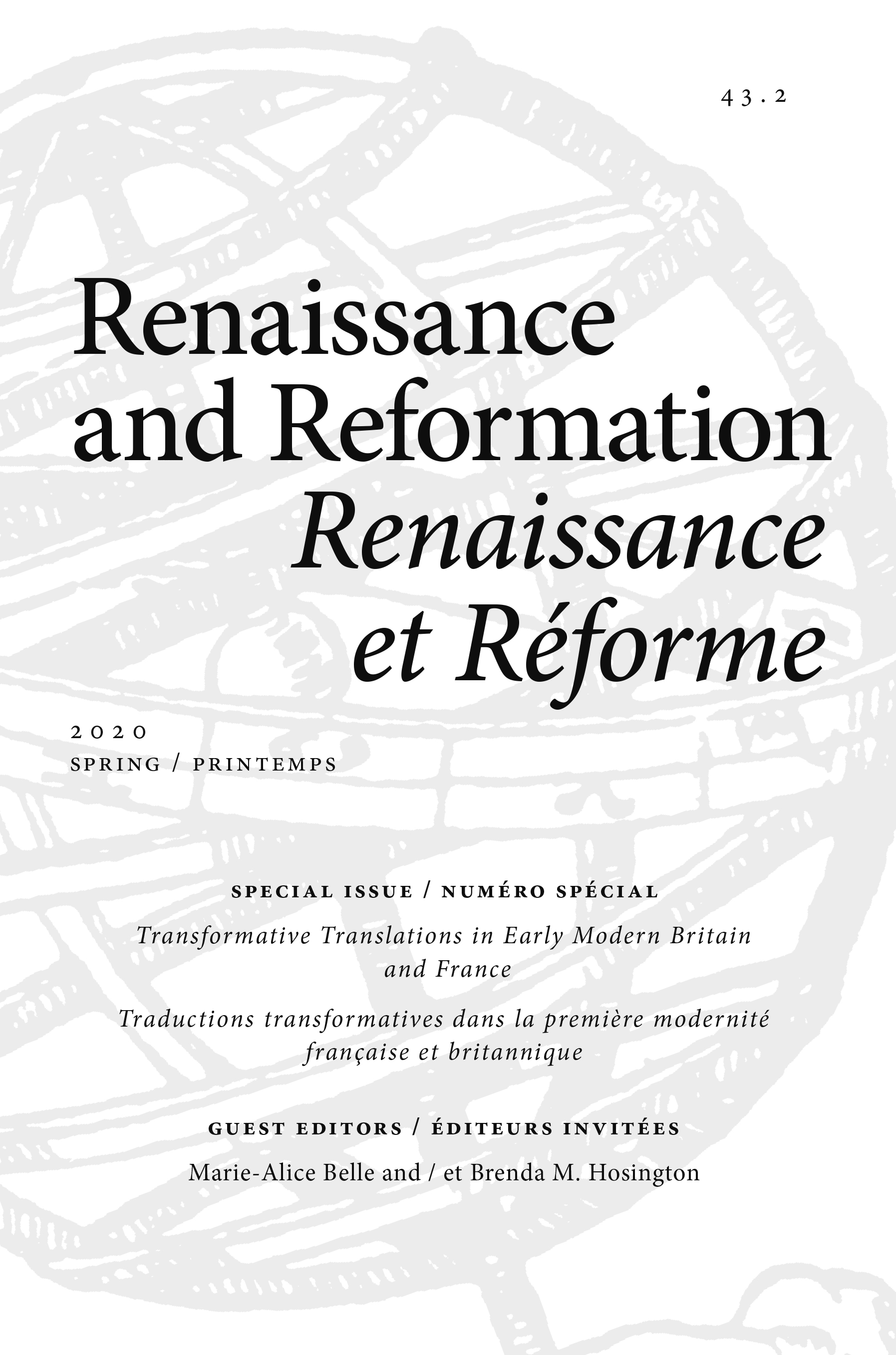Abstracts
Abstract
This article explores the diverse materialities of texts created by three female luminaries that expand our understanding of translation and transformation in early modern Europe. Lady Anne Cooke Bacon’s translation of Bishop Jewel’s Apologia was praised as the official text of the Elizabethan Settlement and printed without change for the edification of both English readers and Continental sceptics. Yet despite its centrality in the vitriolic controversy between Jewel and Louvain Romanist Thomas Harding, within a generation Bacon’s name disappeared. Bilingual calligrapher and miniaturist Esther Inglis prepared and presented stunning manuscript gift books, often including self-portraits, to patrons on both sides of the Channel. Her artisanal expertise emulated and often outdid the typographic variety of the printed text. Scholarly and lionized participant in the Neo-Latin Republic of Letters, Anna Maria van Schurman, whose landmark Dissertatio was translated as The Learned Maid, scandalized her conservative Calvinist supporters by embracing Labadism and praising its simple ways in her autobiography Eukleria. These three early modern women, distinct in temperament, time, and social status, are the subject of this exploration, which seeks to understand the dynamics and fluctuations of cross-Channel transmission and the role played by the Channel divide or bridge in creating a brief notoriety soon to be followed by obscurity.
Résumé
Cet article examine les divers aspects matériels de textes composés par trois figures brillantes de l’écriture féminine et invite à une approche élargie des phénomènes de traduction et transformations dans l’Europe de la première modernité. La traduction de l’Apologia de Jewel par Lady Anne Cooke Bacon fut célébrée en son temps comme la version officielle du nouvel ordre religieux élisabéthain. Publiée sans modification aucune pour l’édification du lectorat anglais autant que des sceptiques de l’étranger, la traduction joue un rôle central dans la controverse acerbe opposant Jewel au théologien de Louvain Thomas Harding ; mais il suffit d’une génération pour que son auteure tombe dans l’oubli. La calligraphe et miniaturiste Esther Inglis fut célèbre à son tour pour les magnifiques manuscrits bilingues, souvent accompagnés d’autoportraits, composés à l’attention de divers mécènes de part et d’autre de la Manche. Par leur finesse technique, ses productions rivalisent avec le texte imprimé, l’emportant même parfois sur le plan de la variété typographique. Enfin, Anna Maria van Schurman, membre parmi les plus brillantes de la République des lettres néo-latine, auteure d’une Dissertatio qui fit date et circula en traduction sous le titre de The Learned Maid, scandalisa son entourage calviniste lorsqu’elle se convertit au labadisme et fit l’éloge de la simplicité de ses voies dans son autobiographie, Eukleria. On dresse ici le portrait de ces trois femmes de la première modernité, bien distinctes par leur tempérament, leur contexte et leur statut social; il s’agit d’étudier la dynamique et les fluctuations propres à leur trajectoire transnationale, et en particulier le rôle de barrière, ou au contraire, de vecteur, joué par la Manche dans la formation de ces fortunes aussi éclatantes que fugaces.
